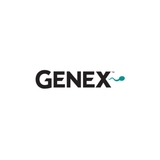
4 minute read
Supply the Nutrients Needed for Post-Calving Recovery
by GENEX
By Liz Binversie, Herd Care Line Advisor, GENEX
Your First Goal Should Be to Hydrate the Fresh Cow
Water intake is critical. It’s the most important nutrient for maintenance and productivity of dairy cattle. In a Florida Dairy Production conference presentation, Dr. Beede of the University of Florida explained the many reasons why water and proper hydration is essential: “Water serves as a medium for dispersion or suspension of colloids and ions within the body and is necessary for maintaining osmotic balance. It functions as a medium for processes of digestion, absorption, metabolism, milk and sweat secretion, and elimination of urine and feces. It provides a medium of transport for nutrients, metabolites, hormones, and gases and is a lubricant and support for various organ systems.”
Water intake is especially critical at calving. Yet, at that time, the cow is under stress and may limit her free intake of water. Intake is critical because the cow not only loses calving fluid and tissue during calving but also water through increased respiration and panting. One study shows cows lose 24.5 to 53 liters of extracellular fluid around calving.
Also, after calving, the space inside the cow previously occupied by the calf is left unoccupied. This means more space for the abomasum to move around and become displaced. If the rumen is filled with water, the chance of a DA decreases.
What Options Do You Have for Hydrating a Cow?
One option is to provide clean, fresh and warm water. However, some cows will not drink on their own. In this case, if the cow is only showing signs of moderate dehydration – such as slight eyeball recession and slightly prolonged skin tent (2 to 4 seconds) – then oral drench solutions are preferred over intravenous or subcutaneous methods.
Most drench products recommend the addition of 5-10 gallons of warm water because it takes approximately 10 gallons of water to replace the lost weight of the calf in volume. That doesn’t even take into consideration additional water loss from increased respiration, panting or not drinking.
Drenching does involve specialized equipment, proper restraint of the cow, proper training and patience. However, several pump systems on the market have made this process easier and safer. One recommended option is the Magrath pump. It can be used by a single person, and 5 gallons of solution can be delivered in just a few minutes.
What Other Nutrients are Necessary in a Drench?
It takes a combination of proper hydration and nutrition for optimal post-calving recovery, especially since cows are often down on feed intake before, during and following calving. That decreased consumption of essential nutrients and the increased demands on the cow for colostrum and milk production puts a cow in a delicate situation. Calcium, magnesium and electrolytes are among the necessary nutrients that should be supplemented through a drench.
Calcium is typically included in oral drenches in highly bioavailable and quickly absorbable forms (often as calcium chloride and calcium propionate). Calcium propionate, a glucose precursor, also provides a source of energy for the cow.
Calcium is added for multiple reasons. At calving, cows are typically low on blood calcium due to the increased demand for calcium in colostrum and milk. In fact, prior to calving 8-10g of calcium are used per day by the fetus while calving and the initiation of lactation requires several times that amount! Without supplementation, the cow experiences a negative calcium balance otherwise known as hypocalcemia. Hypocalcemia can be seen with visible signs (such as down cows) or without clinical signs (known as subclinical hypocalcemia).

Give her the nutrients she needs to recover following the stress of calving. Give her RumiLife® M Drench™ nutritional supplement from GENEX.
Magnesium is usually included in a fresh cow drench because it’s needed to metabolize calcium and thereby helps prevent hypocalcemia. Magnesium levels are dependent on diet and can be low when dry matter intake drops.
Both calcium and magnesium are also necessary for smooth muscle function. If adequate levels are not achieved, a cow is susceptible to an array of metabolic and reproductive disorders early in lactation.
Potassium supplies in the body can be quickly depleted post-calving, as this nutrient is also dependent on feed intake. Low potassium can lead to metabolic issues like ketosis.
Potassium and other electrolytes (namely chloride and sodium) are often included in a drench product because they address the hydration needs of the cow; they are needed for regulating the amount of fluids throughout the body, which affects cellular function, blood volume and blood pressure. Inclusion of a neutral amino acid, such as glycine, improves electrolyte absorption meaning the cow is hydrated more efficiently.
Some type of energy source, such as propionate and dextrose, is included in drench products as glucose precursors. When cows are in a negative energy balance, blood glucose levels may become too low. In this situation, called hypoglycemia, a cow often responds by mobilizing fat stores. The fat must travel through the liver to be converted to energy and if mobilized too fast, ketone bodies and non-esterified fatty acids are formed creating ketosis. Ketones are known to suppress appetite, leading to further fresh cow problems.
A variety of vitamins are also included in a drench. B vitamins are included to stimulate appetite and help maintain carbohydrate metabolism. With low B vitamin levels, appetite loss can occur and lead to additional issues.
Other nutrients such as yeast and direct-fed microbials can also be included in a drench to maintain normal rumen function. These products also assist in maintaining appetite.
In all, many nutrients are needed to keep a cow healthy and producing well. Freshening can take a lot out of a cow, but using an oral drench product is one solution to help restore vital nutrients and ensure a successful transition. Consider adding RumiLife® M Drench™ nutritional supplement, available from GENEX, to your fresh cow program.










